
by Sandra Gulland | May 10, 2014 | Adventures of a Writing Life, The Shadow Queen |
There are some wonderful reviews of The Shadow Queen on Amazon and Goodreads. Here is a quote from one review I like very much, by “Curtis” (otherwise known to me as @gariovich on Twitter):
Athénaïs wields such power over the king that she is referred to as The Shadow Queen. Some may think that the title of this novel is a reference to this, but I would argue the title refers to Claudette. She is the true queen of the novel. She emerges from a life riddled with strife to one of self-determination. In the end, it is Claudette who has emerged from the shadows of poverty and disadvantage to reign over her own destiny.
I especially like this because early reviews took exception to the title. Now reviewers are interpreting the title less literally, which is how it is intended. (I have written about the title here.)
A few review quotes:
JustOneMoreChapter.com: “I adored The Shadow Queen right from the first page.”
I had the unexpected pleasure of meeting Margaret, the reviewer, at one of my readings.
A bookish affair: “My fellow historical fiction fans will eat it up!”
Trudy Morgan-Cole at Compulsive Overreader: “While the glimpses of court life are intriguing and, as always with Gulland, beautifully drawn, what really fascinated me in this book is the theatre world.”
I’ve been very pleased by the number of readers who love the theatre world of The Shadow Queen.
This post is going on too long … . As Mark Twain famously said, “If I had had more time, I would have written a shorter letter.”
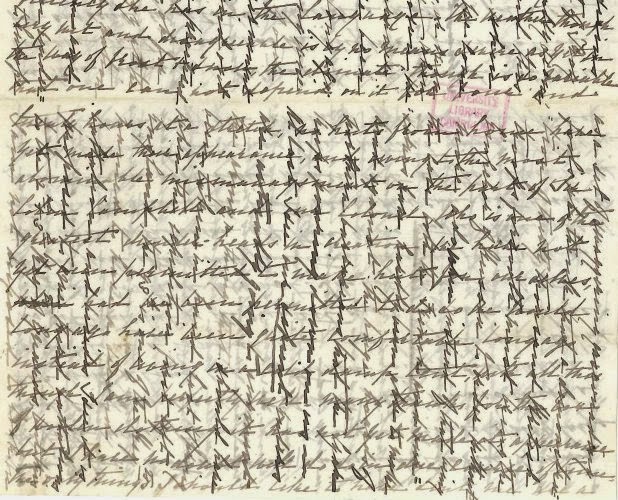
I learned today that in Jane Austen’s England, the receiver of the letter paid according to how many pages the letter was, as well as by how far it had travelled. People put a very great deal onto one page by “cross” writing.
Imagine writing a novel this way … Actually, that rather fits.
Happy Mother’s day, one and all. May there be the gift of time for reading in your day.
by Sandra Gulland | May 3, 2014 | Adventures of a Writing Life |
Don’t you just love this?
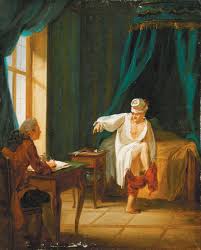
“Voltaire in his night shirt, putting on his trousers while dictating to his secretary, at his house in Ferney, France”; painting by Jean Hubert, 18th century.
I especially love the silly nightcap Voltaire is wearing.
by Sandra Gulland | Oct 9, 2013 | Adventures of a Writing Life |
Every spring and every fall my husband and I make the journey to our “other” home: north to Ontario in the spring, and south to San Miguel de Allende, Mexico, in the fall.

It’s not an easy move for a historical novelist, not easy wrapping up an office and trying to anticipate what reference books I will need in the months ahead.
This fall my move is additionally complicated by having two works-in-progress in two different eras: THE SHADOW QUEEN (set in the 17th century court of the Sun King) and my first Young Adult novel about Hortense (set in the Napoleonic era).

I don’t like returning to an office still in chaos, so I make an effort to sort things out before I leave. This usually means taking care of things I’ve been putting off, and the big “No, not yet” chore I hadn’t faced this summer was sorting out my books.
The shelves of my little office have been filled to capacity with books on the Court of the Sun King and 17th century life for almost a decade. I needed to find room for my stacks of books on Hortense and her world (other than on the floor), and so all day yesterday I hauled books from one place to another. The ping-pong table room is now well stocked with biographies on Sun Court characters, another basement room cleared of the remnants of my Napoleonic book collection, and the floors of my office are almost clear. (Wow.)
Here are my shelves devoted to Hortense:

And here are the books I’ve yet to find a place for:

(Sigh. Back to work.)
by Sandra Gulland | Aug 15, 2013 | Baroque Explorations |

One of my closest friends—Jude Holland—and Napoleon Bonaparte share the same birthday: today, August 15. I’m not going to get all woo-woo about this, but the truth is that I am, in fact, surrounded by friends, family and historical obsessions of the lion persuasion. (I’m a Scorpio: I can handle it. ;-)

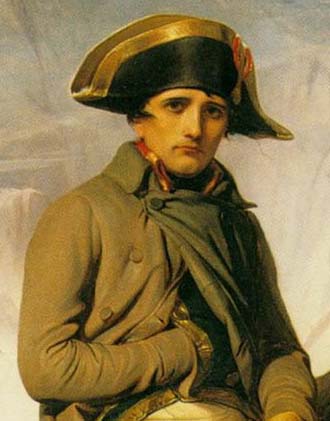

It’s curiously refreshing to have Napoleon back in my life. (I keep wanting to call him “Bonaparte,” as Josephine did.)
The Sun King and Napoleon — a study in opposites
Louis XIV, the Sun King, has been a sympathetic and admirable man to spend a decade with: he was an athlete, not mentally quick, but a hard-working man who strived to do the right thing. Born to rule, he was always careful, always on stage (and thus hard to read). His one obsession was sex (and perhaps that was because it was the only private realm of his existence where he could be free). Ah, and yes: he was also fairly attached to glory. He may not have been a literary man, but he was handsome, invariably polite, a fine dancer and horseman—and how romantic is that?
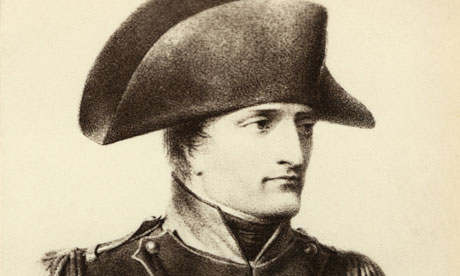
Now: Bonaparte. Not much of a looker, not a dancer (pas du tout!), and not much of a horseman (he went one speed—full gallop—and not infrequently fell off). He was blunt, socially rude—if not an embarrassment—and likely not much in the sack, either, given his general impatience with life. Like the Sun King, he was hard-working, a man who wanted to do the right thing, but as for self-control? Forget it. The world was his stage, and he was, who he was, who he was. And that was: volcanic.
What is Napoleon thinking?
You never really had to ask: what is Bonaparte thinking? His heart, as one says, was on his sleeve, as well as his mind, which was mercurial, lightening quick. He wasn’t literary, either, at least not in the classical sense, but he was moody and had a poetic imagination: ideas infused him.
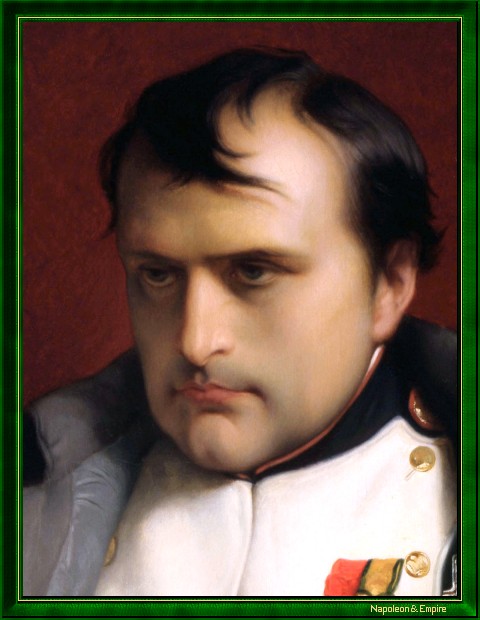
So: who would you prefer to spend a decade with?
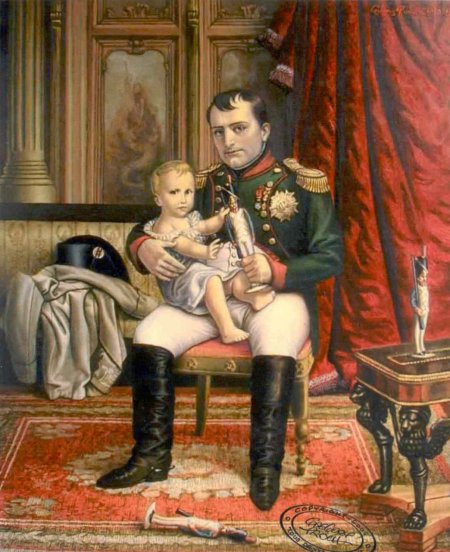
Here are some interesting articles I recently came upon:
A Napoleon theme-park to be built near Disneyland in France? (Is this a joke?)
On film historian Kevin Brownlow’s restoration of Abel Gance’s silent epic Napoleon. (The film versions of Napoleon is an interesting subject: another blog post perhaps.)
And a wonderful podcast series: Footnoting History, with a special series on Napoleon.
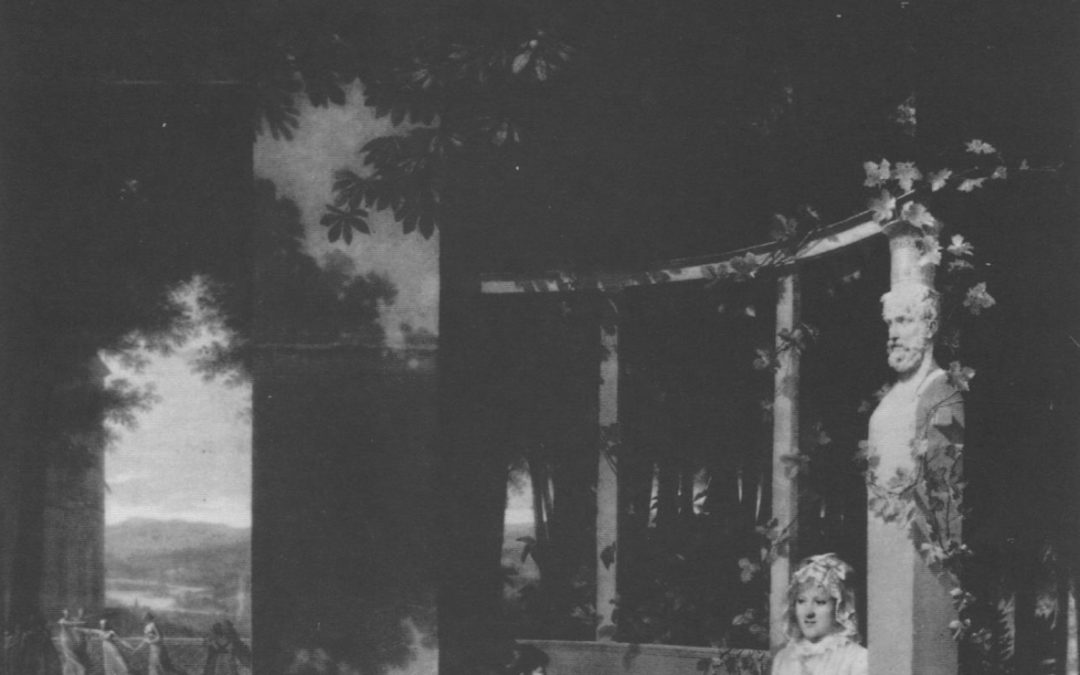
by Sandra Gulland | Jan 3, 2013 | Baroque Explorations, On Research, The Game of Hope |
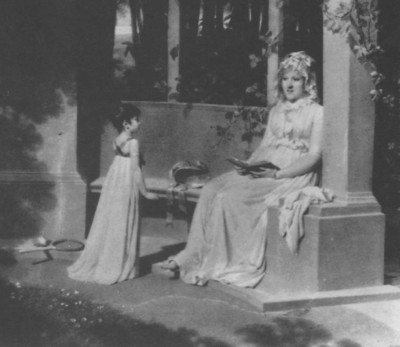
On July 31, 1794, Madame Campan opened her boarding school for girls on rue de Poissy in Saint-Germain-en-Laye, a town not far from Paris.
In the spring of the following year, on May 25, she rented Hôtel de Rohan on 42, rue de l’Unité—now 42, rue des Ursulines—opening the school there on July 1, 1795.
Two months later, on September 1, Josephine de Beauharnais (soon to marry and become Josephine Bonaparte) enrolled her daughter Hortense and her niece Émilie. Her son Eugène was enrolled in a school for boys next door.
Images of the former Hôtel de Rohan
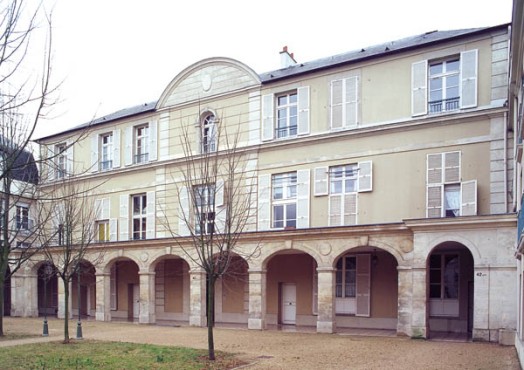
The French government provides all sorts of information on historical sites. This one is a treasure of information and images:
Here is a map detail from the mid-18th century:
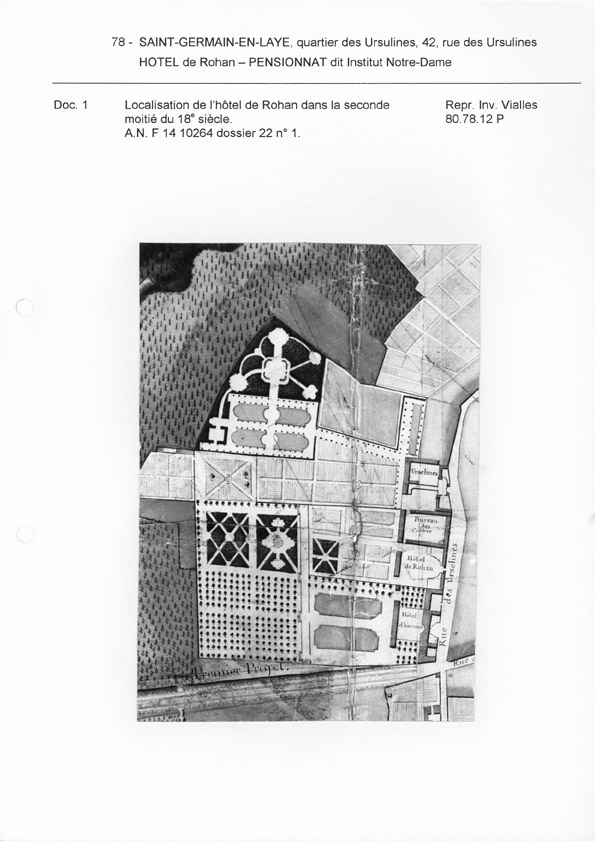
And another one from 1820:
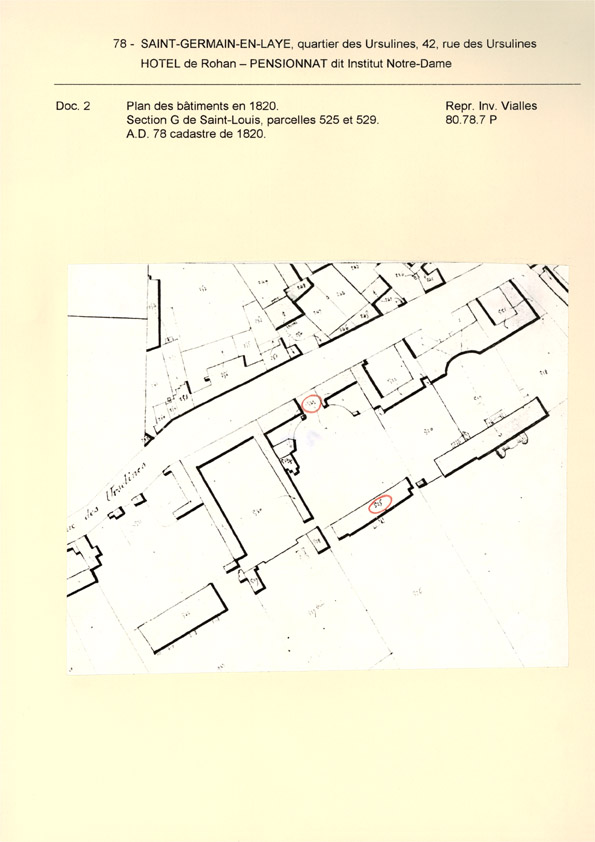
The inner courtyard (mid-19th century):
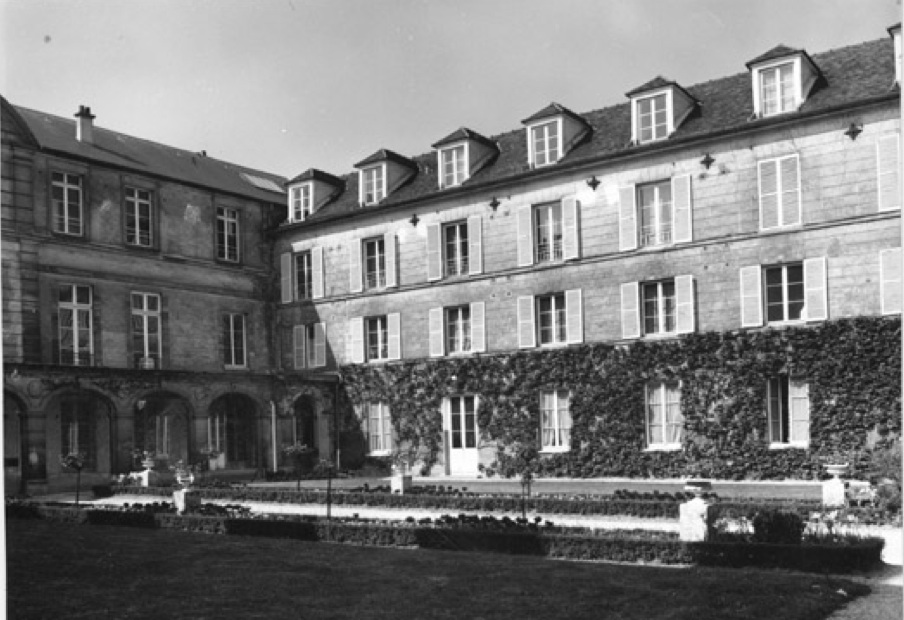
The basin in the entry:
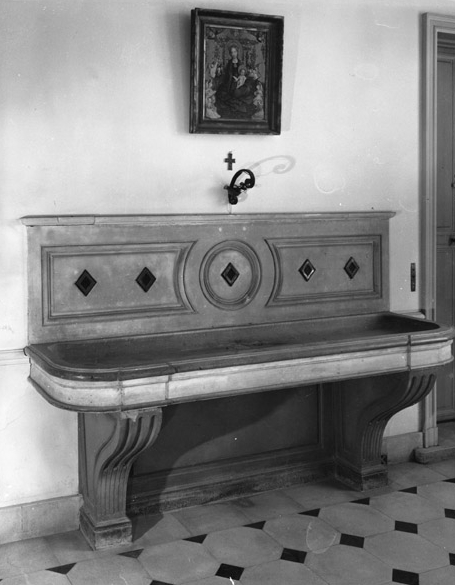
You can see it filled with plants here:
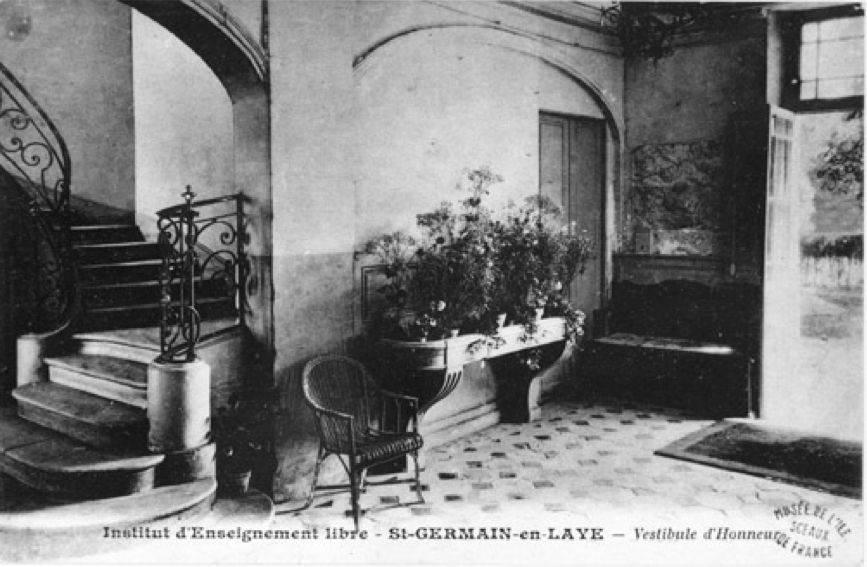
And here’s a detail of the staircase:
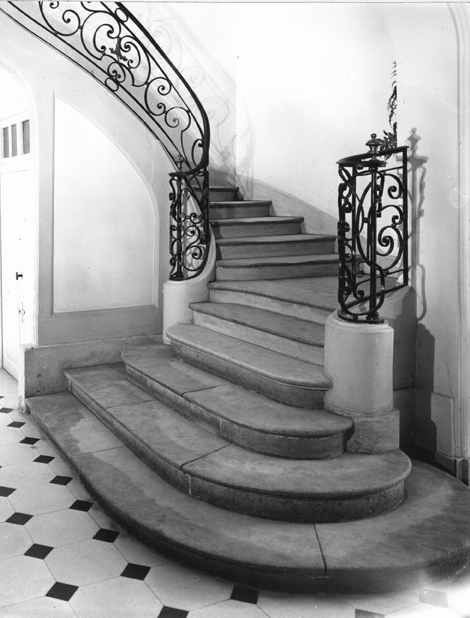
The “school” today
The former Hôtel de Rohan is now an apartment block. On a research trip in 2014, a former resident of the apartments was kind enough to show me in to see what remains of Madame Campan’s school.
Much of it is new, but there are some remnants of the former Hôtel de Rohan:
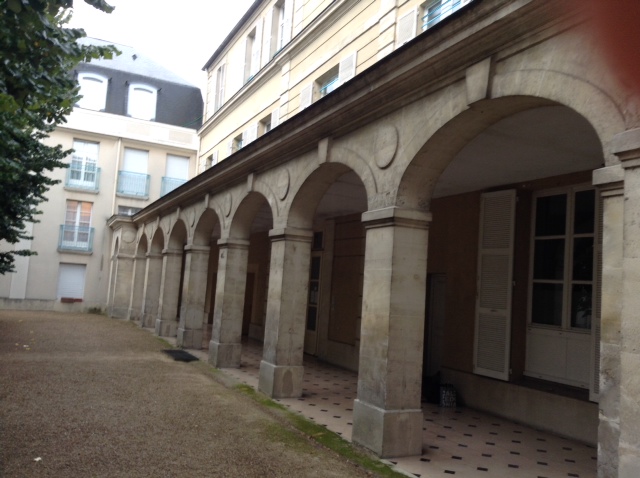
In the back garden, there was this intriguing bit of antiquity:

A bit of the former chapel, perhaps? One can only guess.
Here is the layout of the apartment complex, “Le Parc des Ursulines.” The photo of the arches above are where the “I” is on this plan. The grotto is in the garden beyond.
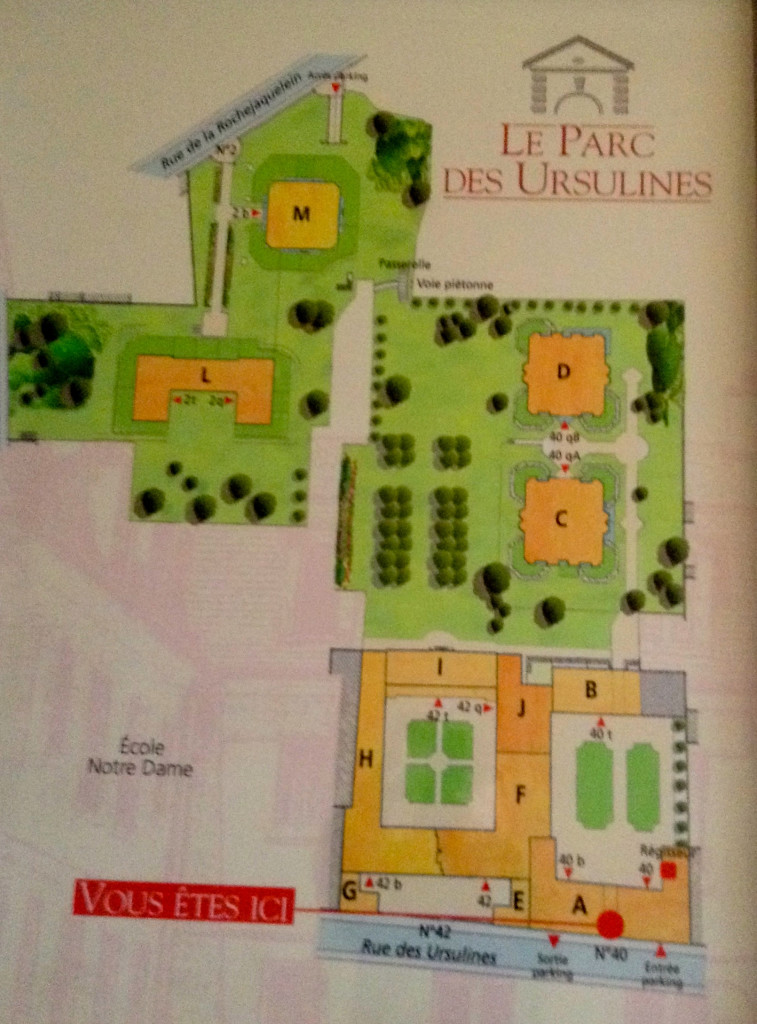
On the name of the school
How was Madame Campan’s school referred to at the time? Here are two possibilities:
L’Institut National des Jeunes Filles/National Institution for Young Women
I’ve also seen (but only in English): National Institution for the Education of Young Women.
l’Institut national de Saint-Germain/The National Institution of Saint-Germain
I have doubts about this last name because during the Revolution the name of Saint-Germain-en-Laye had been changed to Montagne-Bon-Air. It was changed back to Saint-Germain-en-Laye 28 février, 1795, but would Madame Campan have been so bold as to use the former aristocratic name immediately?
SaveSave



























